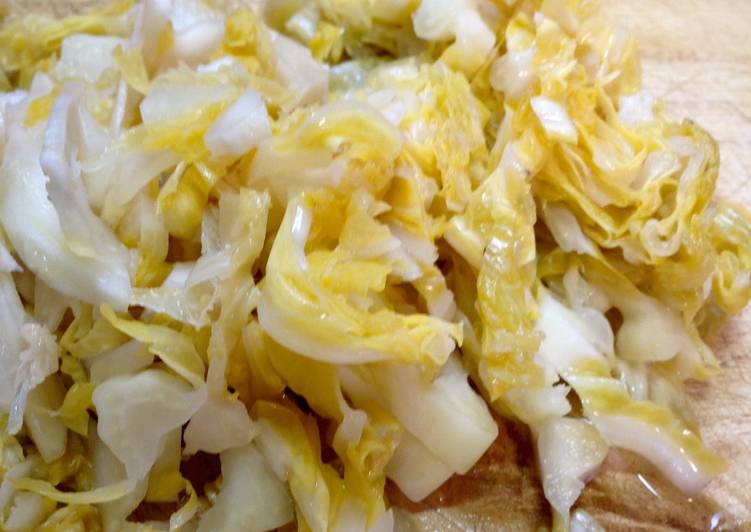Homemade Sauerkraut (Brine method for whole, half or quartered cabbage) ~ Happy Cooking - at the moment is being sought after by many commpany around us, one of them is We. They already are get used to to take advantage of internet on ponsel to find information to be used inspiration. Therefore We give Information related Homemade Sauerkraut (Brine method for whole, half or quartered cabbage) is could my Buddy make it example.
 our could cook Homemade Sauerkraut (Brine method for whole, half or quartered cabbage) using tools 3 ingredient 11 step. the following the steps for make it.
our could cook Homemade Sauerkraut (Brine method for whole, half or quartered cabbage) using tools 3 ingredient 11 step. the following the steps for make it.
The ingredients for cooking Homemade Sauerkraut (Brine method for whole, half or quartered cabbage)
- Please buddy prepare Cabbage (1 medium).
- capable need to provide water.
- Buddy also needs salt.
The Step by step how to cooking Homemade Sauerkraut (Brine method for whole, half or quartered cabbage)
- Dissolve salt in hot water until no more grains are visible. Let cool completely..
- I usually cut my cabbage in half or in quarters. This cabbage here is a called "filderkraut" or "spitzkohl" because of its shape. Apparently it's good for sauerkraut, heh. Anyway you can use whatever kind of cabbage you want..
- Put whole or halved cabbage into a bucket or ceramic crock. Pour in the the cooled salt brine solution..
- The cabbage needs to be completely submerged under the water, so you need to weigh it down with something. I usually lay some plastic wrap over the top of the cabbage and then put a plate top..
- On top of that I put a heavy weigh like a jug of water, etc. (make sure the plate and the weight are washed and clean). Here I'm using a special ceramic weight for fermenting vegetables. Cover with a lid or cloth to keep things out of the container..
- Now just wait for the fermentation to happen! You'll probably start seeing bubbles after a couple days. Check the sauerkraut every day or two and skim off the bubbles. Make sure you label the date on your sauerkraut so you know how long it's been fermenting!.
- The time you need to ferment depends on how warm or cold it is, as well as your taste preference. For me, in the winter I usually give the sauerkraut at least 4 weeks up to 6 weeks. In spring/autumn, maybe around 2-3 weeks. Summer could be 1-2 weeks, but if it's VERY hot, the sauerkraut won't taste that great, so I'd avoid hot weather..
- You can test by taking out the cabbage. It should have become somewhat softened and yellowish in color. It's okay to cut the whole cabbage open and check/taste the center. If you want it to ferment longer, just return it to the crock and let it go for another few days or longer..
- You can also start eating it "young" and keep fermenting the rest for longer so you can enjoy different stages of maturity. Just take some out and cut it up and return the rest of the chunk. If you don't want it to ferment anymore, then move the sauerkraut to the refrigerator..
- NOTE 1: The water will start to become cloudy/white-ish after several days or a week or two if it's cold. It's very likely you can get some white wrinkly, filmy looking mold developing at the surface of the water which is OKAY! You do not need to throw away the sauerkraut. Just continue to skim off as much as you can every day. Under the water the sauerkraut bacteria are creating an acidic, sour environment that prevents any "bad" bacteria and mold from surviving..
- NOTE 2: The sauerkraut will probably be smelly. That's OKAY too! It's just product of the fermentation process. Whenever I open the lid to check my sauerkraut, I open a window or turn on the ventilation fan :P.
That's the discussion or tutorial about Homemade Sauerkraut (Brine method for whole, half or quartered cabbage) Thank you for your visit, if you feel this post on this blog helpful, support we by sharing post this website to social media accounts your favorite like facebook, instagram, pinterrest, Instagram and others Or Our can also mark off this blog this with the title Homemade Sauerkraut (Brine method for whole, half or quartered cabbage) This connten grouped into categories and also this article it is sourced from https://www.cookpad.com ... Happy Cooking :)